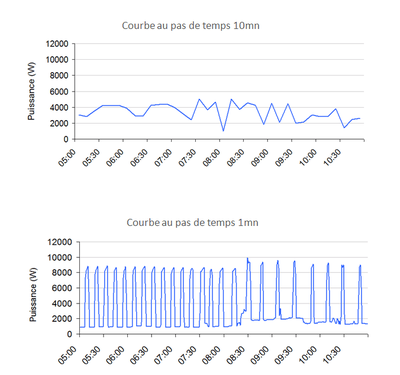
Optical sensors
The sensors, designed and developed by Fludia, are communicating objects dedicated to the recovery of consumption information, by detecting visual indicators present on the meters (diode, rotating parts, roll numbers …) and turning them into useful information.
They include an embedded intelligence and communication abilities. We want our sensors to consume very little for their battery to last several years. We also have to imagine devices and methods for positioning and fixing that are both universal (all meters) and very easy to install.

NILM technology (Non-intrusive load monitoring)
Fludia technology in the field of analysis algorithms focuses on the interpretation of consumption curves (typically for electricity, gas or water), obtained from measurements taken at regular intervals.
Analysis algorithms are used to automatically detect, from the collected measurements, clues of equipment running in order to identify overconsumption or technical anomalies. The methods used are from the “machine learning”, of which a major application is to have a computer perform complex recognition tasks, such as the detection and recognition of faces, license plates, handwriting, speech etc..
The analysis engine developed by Fludia builds on these specialized algorithms to provide, automatically, useful information to help identify equipment overconsumption, to optimize rates and bills and more generally to understand where and how to act for better energy management.

LoRaWAN technology
LoRaWAN (LoRa Wide Area Network) is a radio communication protocol for the Internet of Things (IoT) that defines how wireless sensors using LoRa radio modulation technology can communicate through gateways, forming a Low Power Wide Area Network (LPWAN).
The LoRaWAN protocol is capable of transmitting a small volume of data over a long distance, at a low data rate, so limiting the energy consumption of connected objects and offering battery life of several years. The use of free frequency bands (which can be used royalty-free) reduces the network’s operating costs. In Europe, the network operates on the 868MHz frequency.
In a LORAWAN architecture, a compatible wireless sensor must initially be declared on the network. It can then be started and join the network. A network can be either operated (managed by an operator who charges a subscription, such as Orange in France) or private (the antennas are installed by the person who owns and installs the sensors). The general idea remains the same: LoRaWAN antennae pick up messages sent by sensors and make them available to anyone who has registered sensors.


LoRa Local technology
For certain applications, it may be preferable to use simpler protocols than LoRaWAN, while still benefiting from the performance of LoRa radio modulation.
For example, it is possible to define simplified proprietary protocols with a point-to-point logic. Fludia has developed a protocol called “LoRa Local”, which enables sensors to send messages to a “bridge” (F-Link product) that forwards them via an Internet connection already available on site.
This approach is of interest in the following situations:
- A Fludia sensor needs to be installed at a site outside LoRaWAN coverage, but there is Internet access available on site.
- A handful of Fludia sensors need to be installed on site, but a traditional LoRaWAN architecture, via an operator or a private gateway, would be too costly.


NB-IoT technology
NB-IoT (Narrow Band Internet-of-Things) is a radio communication protocol dedicated to low-power Wide Area Networks and the Internet of Things.
NB-IoT technology has similar qualities to LoRaWAN, with a focus on low power for low-volume data transmission, but there is one key difference: NB-IoT uses the existing network (4G and 5G) of the major mobile operators to transmit data. A big advantage is that the technology is already available in many parts of the world. On the other hand, only licensed telecoms operators can offer a solution.
